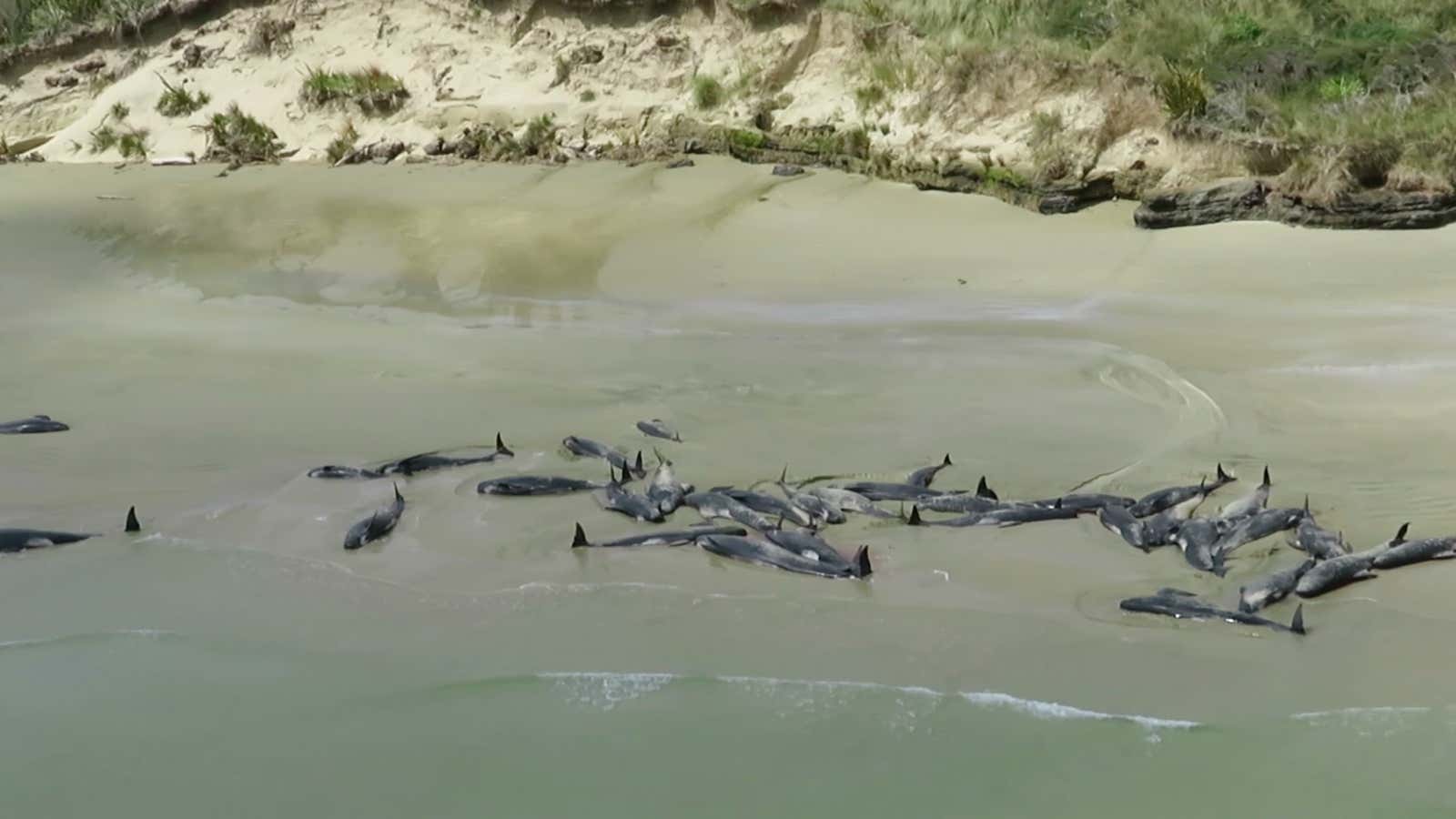When more than 140 pilot whales beached themselves on the coast of New Zealand’s Stewart Island over the weekend, conservation workers came as quickly as they could—but much less quickly than they needed to.
By the time rescuers made it to the isolated coastline late on Saturday night (Nov. 24), many hours had passed since the initial sighting of the whales by a lone hiker, who hightailed it to staff at the Department of Conservation. Rescuers found two pods, laid out across the beach. About half of the animals were already covered in sand, and might have been there as much as a day; the other half were so far gone that staff were ultimately forced to euthanize them.
It’s tragic, but it’s also very puzzling. No one is quite sure why whales beach themselves at all, let alone why hundreds have become stranded on the New Zealand coastline in the last few years. But researchers say they have some ideas—and they may relate to human interaction with the ocean.
Most of the time, marine mammals cruise leisurely through the seas. When faced with a threat, however, they up the ante. Speeding pilot whales can attain a top velocity of 20 mph—but they do so at a tremendous cost. These sprints have a crippling effect on their energy levels, according to a study published last year. It’s the whale equivalent, in short, of running at top speed, perhaps for miles, away from something very scary. (For whales, drag in the water, which increases with speed, exacerbates the problem.)
Some researchers have hypothesized that human disturbances such as military sonar or seismic exploration could trigger this rapid-fire swimming, which sometimes goes on for hours at a time. In one such case in 2002, a pod of stranded beaked whales showed signs of decompression illness, more commonly known as the bends. The condition, experienced by scuba divers who ascend too quickly, is the result of compressed air bubbles trapped in body tissue, the brain, or other organs. It is often fatal.
This, however, is just one explanation. Other studies have concluded that beachings may be the product of navigational mistakes, perhaps related to the geomagnetic disruptions that produce the stunning northern and southern lights. (It may provide a clue as to why beachings often happen close to the poles, in the southernmost parts of New Zealand or way up in the North Sea.) These solar storms distort the magnetic grid, perhaps disorienting the animals and making it harder for them to navigate the oceans as they ordinarily do. If correct, it may also explain why the animals often promptly and tragically re-strand themselves after being tirelessly rescued.
Faced with a beached whale, New Zealand’s conservation workers usually attempt to refloat the dehydrated animal and get it back out to sea. But without knowing why the whales are there in the first place, it’s hard to know how to respond.
